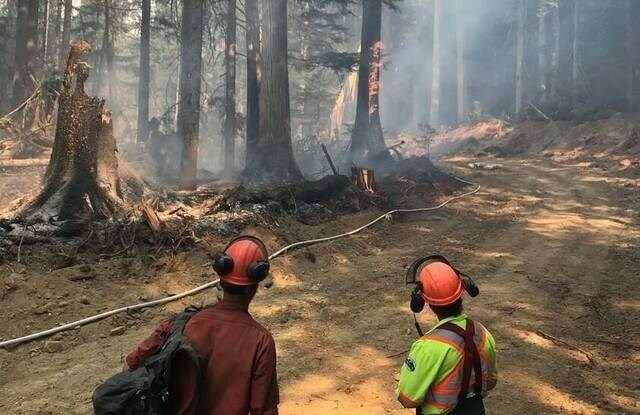VANCOUVER — Crews were called out for two weekend fires in an early start to wildfire season in northwest B.C.
The B.C. Wildfire Service said the two fires were in the area of the village of Kitwanga, which is just off Highway 16, between Smithers and Terrace.
One is now out, while the other is under control. That wildfire is about 160,000 square metres in size and was tackled by 10 firefighters with helicopter support for water bucketing over the weekend. Two crew members remained at the fire Tuesday to patrol and remove gear.
Despite dry conditions in northwest B.C., the wildfire service said there are no other fires of concern among the 12 active wildfires larger than 100 square metres.
“The conditions are very typical for this time of year,” said spokeswoman Carolyn Bartos. She said human-caused wildfires related to backyard burning and grass burning are the leading cause of early-season fires.
Vegetation is very dry and new grass and vegetation has yet to start growing, said Bartos, conditions that aren’t unusual for early spring. Combined with low relative humidity, fires fuelled by wind can move and grow quickly.
Open fires are already banned in the Northwest Fire Centre, while campfires are allowed. There are no other fire bans in B.C. yet.
Last year was one of the most destructive wildfire seasons in B.C. history, fuelled by a record-breaking “heat dome” that contributed to a blaze that destroyed the village of Lytton at the end of June.
A total of 1,642 wildfires burned about 18,700 square kilometres of terrain. While 60 per cent of fires are due to natural causes, some 35 per cent are human-caused. The remaining five per cent are undetermined.
B.C. government provides local grants for wildfire prevention
Meanwhile, the B.C. government is spending $90 million in 2022 to help B.C. communities reduce their risk of wildfires.
The so-called community resiliency investment grants include $4.3 million to 45 local governments and First Nations in the Coastal Fire Centre that were announced on Tuesday.
“Last year’s devastating fire season highlighted the importance of implementing FireSmart activities around B.C. communities and, as we saw in Logan Lake, it can make a big difference,” said Forests Minister Katrine Conroy in a news conference.
FireSmart funding is used to manage fuel — fallen logs, underbrush and so on — on Crown, reserve and private land. First Nations and local governments can apply for the money to complete projects that help prevent or reduce their risk of wildfires. It is administered by the Union of B.C. Municipalities and offers up to $50,000 in lower-risk communities and up to $150,000 in those at higher risk.
“People in the Cowichan Valley want to know steps are being taken to avoid fires like we saw in Copper Canyon during last year’s fire season,” said Doug Routley, parliamentary secretary for forests and MLA for Nanaimo-North Cowichan. “It is vital that we support communities so they can prepare and ensure people’s homes and lives are safeguarded.”



